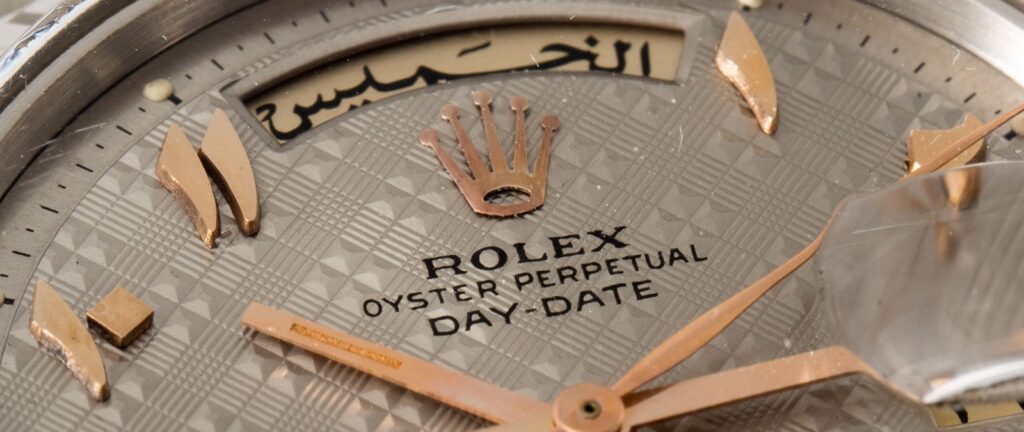Arabic Numerals

In timekeeping, there are plentiful ways to display the time. Currently, many watchmakers are following the trend of minimalist displays—leaving printed numerals in the past. Despite this trend, more traditional timepieces still opt for numbered markings. As it stands, most of these traditional pieces use an Arabic Numeral display. Although Roman Numerals were historically more popular in the West (for ages), the last few centuries have evolved timepieces toward Arabic Numerals as the preferred readout. As it goes, the history of these numbers becoming the norm starts out in more ancient days. Indeed, this every day number system is inextricably tied to the history of mathematics and cross-cultural communication—over multiple centuries. Though (for all intents and purposes) many details have been left out, here’s a brief timeline exploring this phenomenon in numbers.

To begin, the term “Arabic Numerals” can be a bit misleading. The fragmented origins of this number system actually began in Egypt around the 3rd century. From there, Indian scholars in the 6th-7th centuries began to develop it into something much more recognizable to today’s trained eyes. As they still exist, the symbols ranging 1-9 and resetting at “0” were decimal numbers based around multiples of 10. Furthermore, what were then becoming written/known as “Hindu Numerals” began gaining notoriety in other parts of the East. Indeed—although this number system was developing quite nicely in India, this numerical style didn’t become part of the Western consciousness without substantial help from Arabian scholarly pursuits. As it were, by the early 9th century a man by the name Al-Khwārizmī wrote a deep study—in Arabic—on Hindu Numerals and their application.
The latin translation of Al-Khwārizmī’s (known in Latin as Algoritmi—the origin for today’s “algorithm”) work began appearing in North Africa/Spain, in the 10th century. This was the first introduction Europeans had to this system—thus gaining the moniker “Arabic” in the West. Although the introductions began in the 10th century, it was at the dawn of the 13th century that Leonardo Fibbonacci began heavily promoting Hindu-Arabic Numerals through his literature. The father of modern Algebra, Fibonacci lauded the Hindu-Arabic number system for its simplicity and effectiveness. This promotional endorsement reinforced the effectiveness of the Hindu-Arabic Numeral system in academics—but it still took some time to gain further popularity.
In the 15th century, European acceptance of this numeral system began taking its biggest leap forward, with the invention of the printing press. In terms of the printing press, the Hindu-Arabic number system was a real convenience. Requiring only 10 type-sets, the 1-9 and 0 system grew into greater use and popularity—as information became more democratized around Europe. Because of this, new technology in timekeeping (clocks more specifically) began adopting these numbers; The biggest player in adopting these numbers in timekeeping being England—respectively. This had some bearing on global colonialism and the co-opting of other societies’ cultures for informational gain.

From the 15th century onward, the Hindu-Arabic Numeral system continued to have an influence on culture in the West. When calculating equations, even simple ones involving timekeeping, it became an easy to read system in the coming centuries. By the early 1800’s, personal timepieces became more democratized; into the early 1900s, the personal wristwatch saw Hindu-Arabic numerals flying across Europe during mass global conflict; and through the late 1900s—into our current date—digital time-telling primarily abides this set of numbers.
The commonality of the Hindu-Arabic number system can be very easy to take for granted in our modern age. However, countless modern technological advancements could not have been shared globally without these handy numerals. Although many empires, civilizations, etc…have risen and fallen in the time it took to get to this system—it still holds fast. So, whether you’re looking at them as Eastern-Arabic, Hindu-Arabic, Western-Arabic, or simply as “Arabic” Numerals—lend some measure of thought to how they got on the dial. They may appear an innocuous and simple convenience, but they’ve proved to be integral parts of our daily lives, time and time again.
Times Ticking has been in operation for more than 30 years, since 1982. We have performed watch repair for customers both locally and internationally. If it Ticks! We KNOW it! Our team of watch repair technicians have a combined experience in watchmaking of over 120 years.

